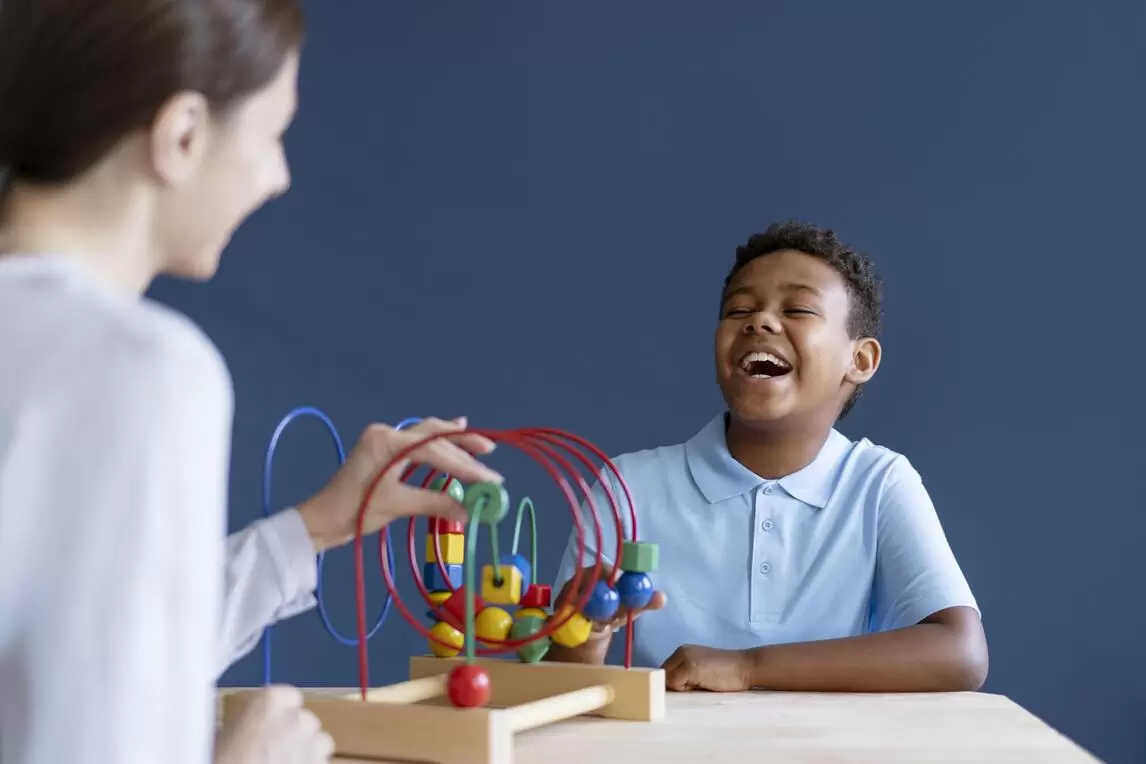The Power of Play: How Sensory Integration Activities Can Boost Your Child's Social Skills

As an occupational therapist , I am often asked about ways to promote social skills in children. While there are many factors that contribute to the development of social skills, one of the most effective methods is through the power of play.
Play is a critical component of childhood development, and it has been shown to have a significant impact on a child's social, emotional, and cognitive development. Sensory integration activities, in particular, are an excellent way to promote social skills while providing a fun and engaging experience for children.
What is Sensory Integration?
Sensory integration is the process of organizing and interpreting sensory information from the environment and our own bodies. Our sensory systems include sight, sound, touch, taste, and smell, as well as our sense of balance and body position. Sensory integration activities aim to stimulate and challenge these systems in a way that promotes the development of the nervous system and improves overall sensory processing.
How Sensory Integration Activities Can Boost Social Skills
When children engage in sensory integration activities, they are provided with a unique opportunity to explore their surroundings and engage with others in a playful and stimulating environment. These activities can help children develop a range of social skills, including:
- Communication: Sensory integration activities provide an opportunity for children to express themselves and communicate with others. Whether it's through verbal communication or non-verbal cues, children can learn to communicate their needs and preferences in a safe and supportive environment.
- Collaboration: Many sensory integration activities require children to work together and collaborate to achieve a common goal. This promotes teamwork and cooperation, and helps children develop the skills they need to work effectively with others.
- Problem-solving: Sensory integration activities often involve problem-solving and critical thinking. Children are encouraged to think creatively and come up with solutions to challenges they encounter during play. This helps them develop their problem-solving skills and prepares them for future challenges.
- Empathy: Sensory integration activities provide opportunities for children to understand and empathize with others. Through play, children can learn to recognize and respond to the feelings and needs of others, which is a crucial skill for building positive relationships.
Examples of Sensory Integration Activities
There are many sensory integration activities that can help promote social skills in children. Here are a few examples:
- Sensory bins: Sensory bins are a great way to stimulate the senses and encourage exploration. Fill a bin with materials like rice, sand, or water beads and add small toys or objects for children to discover and manipulate.
- Playdough: Playdough is a fun and versatile material that can be used to promote sensory exploration and creativity. Children can shape, mold, and create with playdough, which helps develop fine motor skills and encourages imaginative play.
- Swings: Swings provide vestibular stimulation, which can help improve balance and coordination. Swinging can also be a calming and regulating activity, which can help children regulate their emotions and behavior.
- Obstacle courses: Obstacle courses provide a fun and challenging way for children to work on their gross motor skills while promoting teamwork and collaboration.
Braintree Healthcare's occupational therapists use a range of sensory integration techniques and activities to help children improve their sensory processing abilities. Through play-based therapy sessions, children can engage in sensory-rich activities that challenge and stimulate their sensory systems. By providing a variety of sensory experiences, therapists can help children learn to regulate their responses to sensory input and develop the ability to respond appropriately to different stimuli.
In addition to therapy sessions, Braintree Healthcare also provides resources and support for parents and caregivers to help them better understand their child's sensory processing challenges and how to support them at home. Through parent education and training, Braintree Healthcare helps families create sensory-friendly environments and develop strategies to support their child's sensory needs.
Conclusion
Sensory integration activities are a powerful tool for promoting social skills in children. By providing a fun and engaging environment for exploration and play, these activities can help children develop communication, collaboration, problem-solving, and empathy skills that will serve them well throughout their lives. I encourage parents and caregivers to incorporate sensory integration activities into their children's playtime and watch as their social skills flourish.
Please share with those who could benefit
Encourage your friends and colleagues to join the community and take advantage of events and resources for children with special needs.
Or share on: